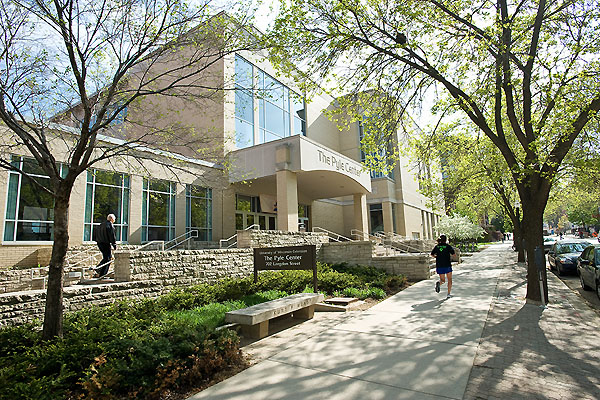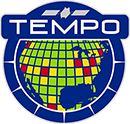Final Program

Tuesday, 4 June
8:30 Registration (Auditorium)
9:00 LMOS/LISTOS/OWLET Regional Collaborations (PDF)
12:00 Lunch on own
13:00 PANDORA Meeting (PDF)
Informal Group Dinner cancelled
Wednesday, 5 June
08:00-09:00 Registration
09:00-09:10 UW greeting
Wednesday AM: AQ Constellation Status (Kelly Chance, chair)
Commonalities and differences between constellation data products
09:10-09:30 NASA Overview: Barry Lefer, NASA/HQ
09:30-10:15 TEMPO Status Update: Kelly Chance, Raid Suleiman, and Erika Wright, SAO/Harvard
10:15-10:30 Break
10:30-11:00 GEMS Status Update: Jhoon Kim, Yonsei University
11:00-11:30 TEMPO activities in Mexico: Michel Grutter, Universidad Nacional Autonoma de Mexico
11:30-12:00 TEMPO activities in Canada Chris McLinden, Environment Canada
12:00-13:30 Lunch on own
Wednesday PM: Recent ground based and field campaigns, future opportunities (Brad Pierce, chair)
Questions to Address:
- What have we learned for TEMPO validation?
- How would TEMPO have been used to support the campaigns?
- How do we design special TEMPO observations for focused field campaigns?
- How do we link diurnally resolved columns to boundary layer dynamics?
- How do we expand NO2 validation efforts to HCHO and O3?
13:30-15:00 Recent Field Campaign activities (LMOS, LISTOS, OWLETS)
Science Objectives, management goals, validation opportunities
Science Panel: (45min, 1-2 slide synthesis of previous day’s meetings to address TEMPO questions followed by discussion)
- Airborne Column Mapping Perspective: Laura Judd, NASA/LaRC
- Pandora Perspective: Luke Valin, US EPA
- Ground based profiling Perspective: John Sullivan, NASA/GSFC
- Aircraft profiling Perspective: Angie Dickens, WDNR
- Modeling Perspective: Greg Carmichael, University of Iowa
Management Panel: (45min, half TEMPO addressing management issues followed by discussion)
- LADCO Perspective: Zac Adelman, LADCO
- NESCAUM Perspective: Paul Miller, NESCAUM
- MDE Perspective: Joel Dreesen, MDE
15:00-15:15 Break
Recent ground based Activities (Bob Swap, chair)
15:15-15:30 High resolution insitu networks: Ron Cohen, UC-Berkley
15:30-15:45 Pandora network: Bob Swap, NASA/GSFC
15:45-16:00 TOLNET deployments: Mike Newchurch, University of Alabama-Huntsville
16:00-16:15 Break
16:15-17:15 Discussion of possible future campaign opportunities (Newchurch and Lefer, chairs)
Questions to Address:
- How does TEMPO engage local management agencies and leverage partner resources?
- (TEMPO Green Paper forms initial starting point for engagement)
- How can we create a process to vet future science field campaigns with regard to TEMPO validation plans?
- How do we align Pandora/TOLNET networks and enhanced in-situ monitoring with TEMPO launch schedule?
- What’s the expected post-launch schedule for TEMPO science products?
- What’s the scope of future campaign opportunities?
- Should we consider revisits to LMOS/LISTOS/OWLETS?
- Should we consider a broader EVS (three years from now) land-water interface including coupling between dynamics and chemistry?
17:30-19:30 Poster Session
Thursday, 6 June
Thursday AM: Preparing for TEMPO Data (Jim Szykman, chair)
09:00-09:15 ASDC DAAC Data distribution: Walter Baskin, NASA/LaRC
09:15-09:30 SAO Data distribution: Raid Suleiman, SAO/Harvard
09:30-09:45 RSIG L2-L4 products/user interface: Jim Szykman, US EPA
09:45-10:00 Coordinating ground-based in situ/remote networks: Lukas Valin, US EPA
10:00-10:15 Providing Proxy Data for early adoptors: Aaron Naeger, NASA/MSFC
10:15-10:30 Break
GOES-R/TEMPO Synergies (Jay Al-Saadi, chair)
10:30-10:45 NOAA Perspective: Pubu Ciren, NOAA/NESDIS/STAR
10:45-11:00 NASA Perspective: Pawan Gupta, NASA/GSFC
TEMPO composition/emission constraints (Brad Pierce, chair)
How do we optimize the use of TEMPO measurements to constrain air quality models?
11:00-11:15 4DVar NOx emission adjustments: Zhen Qu, University of Colorado-Boulder
11:15-11:30 TEMPO Ozone OSSE/off-line 3DVAR NOx emission constraints: Brad Pierce, University of Wisconsin-Madison
11:30-11:45 TEMPO OSSE: Ron Cohen, UC-Berkley
11:45-12:00 Fuel-based mobile source emission inventories: Brian McDonald, NOAA/ESRL
12:00-13:30 Lunch on own
Thursday PM: General TEMPO Science Talks (open invitation, Kelly Chance, chair)
13:30-13:50 Connecting TEMPO with Air Quality, Health, and Energy Needs: Lessons from NASA HAQAST: Tracey Holloway, UW-Madison
13:50-14:10 Interpreting NO2 observations from TEMPO: the importance of accounting for the free tropospheric background: Daniel Jacob, Harvard
14:10-14:30 TEMPO O3 profile algorithm: Xiong Liu, SAO/Harvard
14:30-14:50 Validation of TROPOMI Tropospheric Ozone Using TOLNET Observations: Matthew Johnson, NASA/AMES
14:50-15:10 Deriving surface concentrations from TEMPO columns and vertical profile shapes based on DISCOVER-AQ: Kang Sun, University of Buffalo
15:10-15:30 Optimized network of PANDORAS for urban-scale validation: Jeffrey Geddes, Boston University
15:30-16:00 Break
16:00-16:15 OMI surface retrievals improved by machine learning techniques: Guanyu Huang, SAO/Harvard
16:15-16:30 Revisiting HCHO retrievals from Pandora direct sun measurements, 2016-1019: Elena Lind, Virginia Tech
16:30-16:45 CH2O retrievals from our aircraft instruments during last summer’s LISTOS campaign: Scott Janz, NASA/GSFC
16:45-17:00 Multi-sensor (OMPS, OMI, TRIOPOMI, and VIIRS) approach to constrain aerosol emissions: implication for TEMPO and GEMS: Jun Wang, University of Iowa
17:00-17:30 Wrap-up
What needs to be done pre-launch to address foci: Validation networks, link with science field campaigns, engaging regional planning organizations, modeling and data assimilation activities
17:30 END OF TEMPO STM
For more information, contact Maria Vasys.


